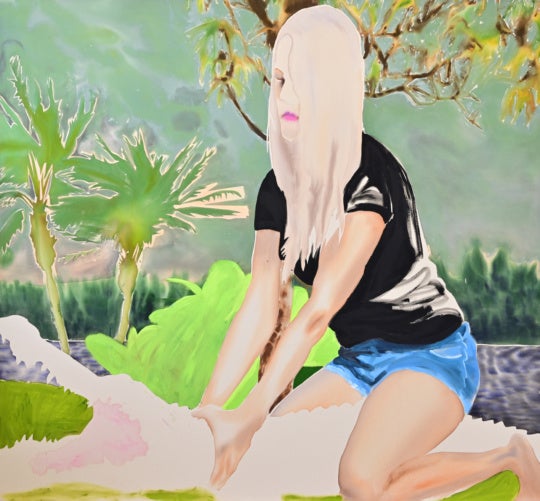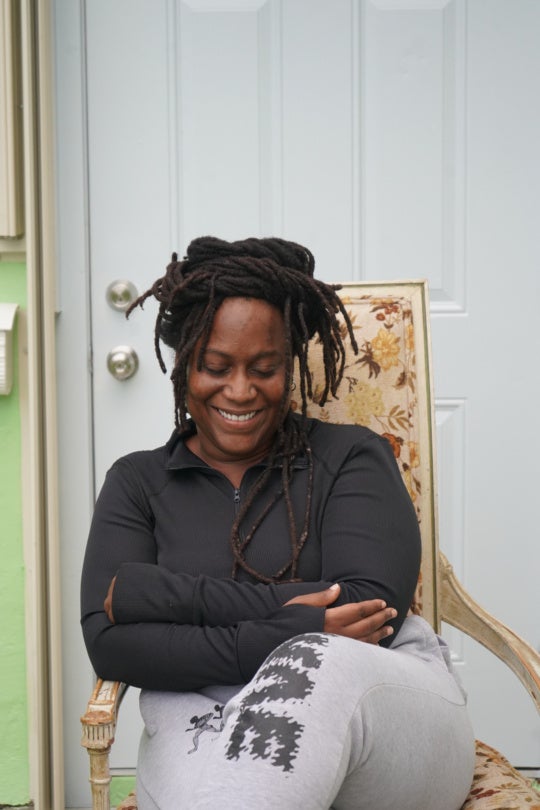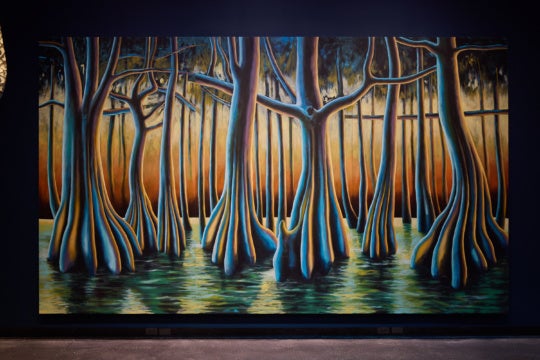
“Phantom Bodies: The Human Aura in Art” at the Frist Center for the Visual Arts in Nashville caps off a trilogy of exhibitions focused on the human body, organized by the center’s chief curator Mark Scala. Beginning with “Paint Made Flesh” (2009) and followed by “Fairy Tales, Monsters, and the Genetic Imagination” (2012), the expansive series began by asking questions about the physical stuff of the body before going on to investigate the mutability of our conceptions of our bodies in transformational narratives of various mythologies and even the direct interventions of genetic engineering. Where “Paint Made Flesh” found its footing in Lucien Freud’s gooey, almost grotesque nudes. Francis Bacon’s grimacing, twisted faces. and a massive Jenny Saville portrait, “Phantom Bodies”’ content is more subtle – the title of the show alludes to the phenomenon of patients claiming to feel a limb after an amputation. “Paint” was a show about how pigments and binders can capture the presence of physical bodies, but “Phantom” shows how contemporary creators might also depict the absence of one.
Alicia Henry’s Untitled (Brown, Red, White, and Blue) is an arrangement of cut-and-sewn disembodied heads and limbs, clothing, and figures made of felt. The piece dominates one gallery, taking up a whole wall, with two groups of the pieces divided by a vertical line of 17 red felt dots. The elements on the left are mostly colorful. On the right side, black is the dominant hue. Those missing limbs along with sad-faced masks seem to indicate that this group represents the past or even death – it’s the place where lost things dwell, be they limbs or family and friends who have passed away. The more colorful elements on the left seem to represent living people and tangible things in the present. The dividing line between the two suggests mystical interpretations of the number 17, which can allude to eternity and even victory over death.
Medusa, from Adam Fuss’s Home and the World series, is a large photogram that pictures about half a dozen large snakes wriggling inside a ghostly-looking wedding dress. Fuss’s Medusa story isn’t the one featuring the Gorgon’s beheading by Perseus. Fuss’s piece points to a secondary, lesser-known aspect of the story, which finds Pegasus and the giant Chrysaor springing to life from two drops of Medusa’s blood. Fuss sees these as positive effects rising from negative circumstances, and his interpretation of the myth alongside the positive/negative elements of the photogram process play off of each other like a sly joke, bringing even more levity to Fuss’s floating gown.

For me, Henry’s work speaks to a continuum of vitality over time, and Fuss’s work reminds us that within death and absence there might also be life and presence. Ken Gonzales-Day’s manipulated archival photographs of Western lynching victims and the crowds that witnessed and committed their mob-mad murders allude to these lost lives by erasing the victims and their ropes from his images. The works are subversive – titles like This is What He Got or Five in a row cue viewers to search for the victims/subjects in the images and to imagine them in the spaces they once occupied. The voyeuristic point of view creates a kind of complicity that aligns the viewer with the pictured mob rather than with the victims, with whom most might seek to empathize. There is a kind of moral presence in the corporeal absences in Gonzales-Day’s images that picture atrocities, whether we can see them or not.
“Paint Made Flesh”’ benefitted from its single-medium approach that brought an overall unity to the show, reinforcing the connections between artists as varied as Pablo Picasso, Alice Neel, and Georg Baselitz. “Fairy Tales, Monsters …” included work in a variety of media and felt unfocused compared to its predecessor. The show’s fairy tales section was a knockout that featured a Kiki Smith sculpture that was the most memorable work in the show. However, despite Patricia Piccinini’s dramatic lifesize monster sculptures, the sections dealing with genetic engineering felt thin and uneven, and almost unnecessary in light of the strength of the rest of the show. “Phantom Bodies”gets the series back on track with a display that leaps across media but which mostly feels of a piece of the larger exhibition.

Damien Hirst’s The Unbearable Lightness of Being is a wall sculpture of butterfly taxidermy that must include a few hundred multicolored wings. The arrangement of insects recalls both Islamic tapestries and church windows, and the transformative symbolism of the butterflies reinforces these suggestions of mystical portals. This work could represent the entire series, pointing to the trilogy’s opening a door on an expansive and affecting exploration of contemporary art and the body, as seen through the eyes of Nashville’s most high profile curator.
“Phantom Bodies: The Human Aura in Art” is on view at the Frist Center for the Visual Arts through February 14.
Joe Nolan is a critic, columnist, and intermedia artist in Nashville. Find out more about his projects at www.joenolan.com.




